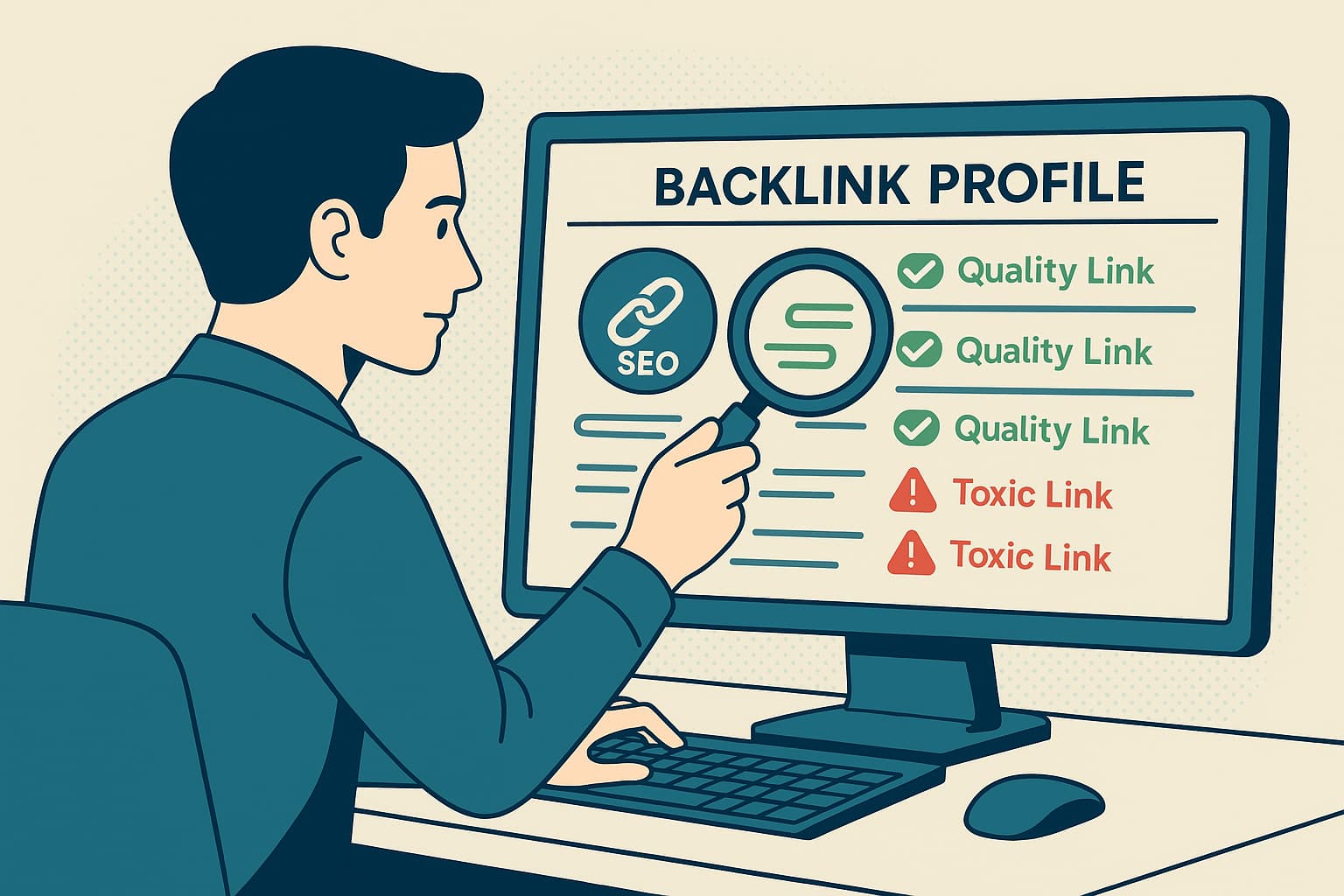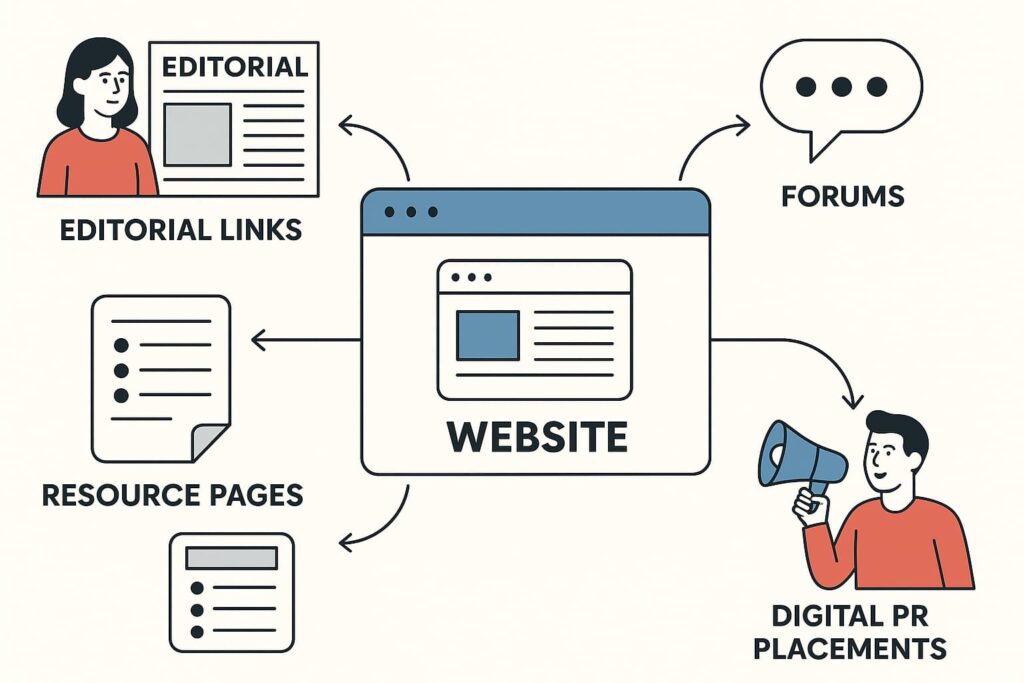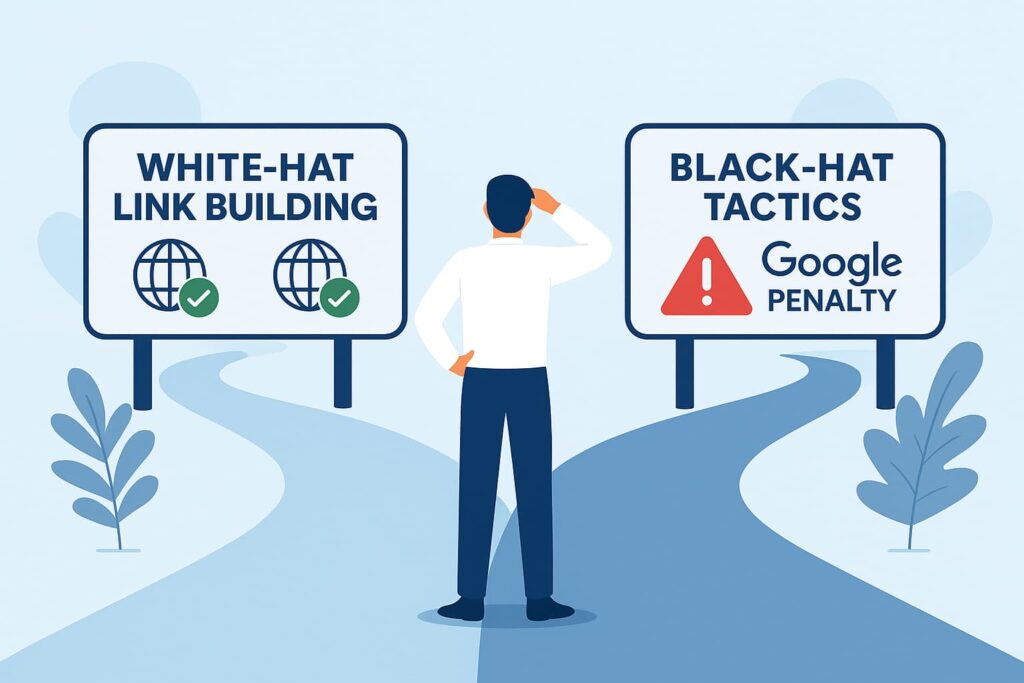
Do SEO Link Building Services Really Work in 2025
Link building continues to be a key SEO strategy, but Google’s frequent algorithm updates have changed what works. Many marketers question whether paid link building services still deliver results in 2025. The answer is yes — but only when using approved methods.
This guide explains:
- How effective link-building services operate today.
- Current best practices for quality backlinks.
- How to identify legitimate providers.
- What tactics to avoid.
The rules have changed. Services that relied on quantity over quality no longer work, while those following Google’s guidelines can still improve rankings when implemented properly. We’ll show you what separates effective services from risky ones.
The State of Link Building in 2025
Google’s 2024 algorithm updates (particularly the “Links Spam Update“) fundamentally changed how we approach link building. The search giant now uses advanced AI-powered evaluation systems that go far beyond traditional metrics like Domain Authority. Here’s what modern SEO demands:
1. The Authority Shift
73% of ranking sites in top positions now have backlinks from at least 3 different high-authority domains. Google’s “Entity Recognition” algorithms now evaluate:
- Publisher credibility (verified author profiles matter).
- Site reputation (trust signals from independent review platforms).
- Content depth (links from comprehensive resources outperform shallow pages).
2. The Natural Profile Imperative
Building a natural backlink profile is no longer optional—it’s a fundamental requirement for SEO success in 2025. Google’s algorithms have grown sophisticated enough to detect artificial link patterns, making organic acquisition strategies essential.
A truly natural link profile requires strategic diversity—a balanced mix of different link types that mirrors how authoritative websites naturally earn backlinks. This includes editorial placements from earned media coverage, authentic community links from relevant forum discussions and Q&A platforms, and legitimate resource citations from industry directories and tools.
Equally important is temporal distribution. Google’s systems now flag unnatural “link spikes”—sudden surges of backlinks that suggest artificial manipulation. Instead, gradual, consistent link acquisition over time signals organic growth to search engines.
One of the most telling changes is how anchor text usage has evolved. Recent data shows that only 28% of top-ranking pages still depend on exact-match anchor text. This shift highlights Google’s preference for natural linking patterns, where most backlinks use brand names, generic phrases, or plain URLs—just like you’d see in authentic, editorially placed links.
3. Relevance Redefined
2025’s relevance standards now consider:
- Topic Clusters: Links from semantically related content (not just direct competitors).
- User Journey Alignment: Backlinks from sites your audience actually visits.
- Localized Signals: For local businesses, community-based links (chamber of commerce, local news) carry disproportionate weight.
Why Most Traditional Services Fail
Many conventional SEO link building services continue to operate with outdated approaches that no longer align with Google’s quality standards. Their methodology typically revolves around three problematic elements.
First, they prioritize bulk link quantities, offering packages promising hundreds of backlinks without proper vetting for quality or relevance. This mass-production approach directly conflicts with Google’s emphasis on natural, earned links.
Second, they rely heavily on artificial metrics like Domain Authority (DA) or Domain Rating (DR) as their primary quality indicators. While these scores might appear impressive, they often fail to reflect a website’s actual authority, traffic quality, or relevance to your niche.
Their fixed monthly packages show a one-size-fits-all approach. These rigid bundles don’t adjust to a website’s specific content strategy, audience, or competition—making them a poor fit for most real SEO needs.
This outdated model explains why many businesses see minimal results from traditional services — their approach simply doesn’t meet modern SEO requirements for authentic, high-value backlinks.
These outdated approaches explain why 68% of marketers report dissatisfaction with generic link services (Backlinko 2025 Survey). The winners in 2025? Hybrid models combining:
- AI-assisted prospecting.
- Human-vetted placements.
- Performance-based pricing.
Adapt or Get Penalized
Google’s new “Link Quality Score” (beta) will automatically discount low-value links, implement author-level reputation scoring, and verify authority across platforms including social media and YouTube. These changes make outdated link-building approaches ineffective. To avoid penalties, strategies must adapt to these new requirements.
This evolution means agencies must either:
A) Develop proprietary vetting systems.
B) Partner with specialized editorial networks.
C) Shift to pure digital PR models.
The takeaway? Effective 2025 link building isn’t about building links — it’s about building relationships with authoritative publishers in your space.
How Effective Are SEO Link Building Services in 2025?

Not all link-building services are created equal. Some still rely on outdated tactics like PBNs (Private Blog Networks) or low-quality directory submissions—these can actually harm your site.
However, reputable SEO link building services focus on:
- Guest Posting on High-DA Sites — Contributing valuable content to authoritative blogs in your industry.
- Broken Link Building — Replacing dead links with relevant ones pointing to your site.
- Digital PR & Outreach — Earning mentions from journalists and influencers.
- Skyscraper Technique — Creating superior content and reaching out to sites linking to competitors.
A recent Reddit discussion asked, “Anyone had real success with a link building service?” revealing valuable insights about link building services that Reddit marketers trust. One user shared their positive experience:
“Can you share your niche and website? Some things that work for one type of website may not work for another. For my B2B SaaS Sitechecker, I’ve used services of Editorial Link and Shared Domains (home page backlinks from expired domains). For me, it works well, but we also did a lot of manual outreach and have a lot of organic backlinks.”.
Choosing the Right SEO Link Building Service
When selecting a link-building provider, focus on finding one that uses legitimate, long-term strategies rather than shortcuts. Many agencies and freelancers claim to improve rankings, but you need one that follows current SEO best practices and offers tailored solutions instead of pre-made packages.
Transparency is Essential
Good link building services don’t promise instant results or thousands of links for low prices. They clearly explain how they work, what timelines to expect, and how much it costs. Avoid companies that won’t tell you where your links will be placed or offer prices that seem too good to be true. A trustworthy provider will explain their process and keep you updated.
Check Their Results
Before hiring a service, review their past work. Look for case studies with specific ranking and traffic improvements. Real client testimonials (with verifiable contacts) are important. The best providers can show examples of links they’ve secured and explain how those helped clients.
Only Use White-Hat Methods
Make sure the service follows Google’s rules. They should explain why their methods are safe and what they’ll do if any links become problematic. Good providers earn links through quality content and relationships, not by buying them or using shady networks.
Proper Anchor Text Use
A professional service will use anchor text naturally—mixing branded terms, partial keywords, and generic phrases. They should review your current backlinks to determine the right balance for your site.
Relevance Matters
The best services focus on getting links from sites in your industry, which Google values more. They should understand your business and explain how they’ll get placements on relevant websites. Look for providers with connections in your field or a strong outreach process.
Following these suggestions will assist you in finding a provider that boosts ranks in a safe and effective manner, without incurring fines. Avoid providers that offer quick fixes—real link building takes time and proper strategy.
Common Mistakes to Avoid

Even when using expert SEO link-building services, a few fundamental mistakes can damage your efforts and even affect your site’s results. Understanding these risks is critical to creating a successful, penalty-proof link strategy.
1. The Dangers of Cheap, Low-Quality Links
Lots of companies get tempted by those “500 backlinks for $50” deals. But here’s the catch — these links typically come from shady directories, junk article sites, or fake blog networks. Google spots these instantly.
When Google rolled out its 2024 spam updates, websites using these shady tactics got hit hard — many saw their rankings tank overnight. The worst part? Fixing the damage isn’t quick. You’ll likely spend months cleaning up your backlink profile, often having to manually disavow hundreds of bad links through Google’s tools.
2. Overlooking Content Quality in Link Building
Some SEOs think backlinks alone can push rankings higher, but that’s not the full story. Even high-quality links lose their power if they point to weak, irrelevant, or poorly optimized content. Google’s Helpful Content update makes it clear: pages that truly meet user needs rank better. Before chasing backlinks, make sure your content:
- Offers in-depth, original information.
- Delivers something competitors don’t.
- Is optimized for both search engines and real users.
- Keeps visitors engaged (low bounce rates, longer time on page).
3. The Critical Role of Internal Linking
Internal linking is often overlooked in favor of external backlinks, but it plays an equally vital role in SEO. A strong internal linking structure helps distribute link equity across your site, ensuring that ranking power flows to your most important pages. It also helps search engines crawl and understand your content hierarchy more effectively.
From a user experience perspective, strategic internal linking improves navigation, keeps visitors engaged, and guides them toward conversion points. For SEO, it strengthens the authority of key pages by concentrating internal links toward them.
Effective internal linking requires following the core best practices:
- Connect deep pages to your cornerstone content to reinforce topic clusters.
- Use descriptive, keyword-optimized anchor text that clearly indicates what users will find.
- Organize content into logical silos through your linking patterns.
- Conduct regular audits to identify and fix broken internal links.
A well-planned internal linking strategy complements your external link building efforts and maximizes the value of all incoming links to your site.
Additional Mistakes to Watch For:
- Over-optimized anchor text: Having too many exact-match anchors appears unnatural.
- Ignoring link diversity: A healthy profile includes various link types (editorial, guest posts, resource links).
- Neglecting link velocity: Sudden spikes in backlinks can trigger algorithmic flags.
- Focusing only on DA/DR: Domain authority metrics don’t always correlate with actual ranking power.
By avoiding these common errors and focusing on sustainable, white-hat link-building practices, you’ll build a backlink profile that delivers lasting ranking improvements without risking penalties. Remember that quality always trumps quantity in modern SEO, and the best link building strategies complement outstanding content rather than trying to compensate for poor content.
The Future of Link Building
As AI and machine learning shape SEO, link building will remain crucial—but with a stronger focus on:
- Earning, Not Buying Links — Google rewards natural, editorially given backlinks.
- Brand Mentions — Even unlinked mentions can boost authority.
- Diversified Link Sources — A mix of guest posts, niche edits, and PR boosts credibility.
Conclusion
Link building services can still help your SEO — but only if they’re getting you real, quality links from trustworthy websites in your industry. Google’s gotten smarter and now immediately spots shady tactics like private blog networks and those spammy directory links that used to work.
The good services? They do things the right way — getting you featured in real guest posts, earning media coverage through digital PR, and making smart updates to existing content. Most importantly, they build links at a natural pace that won’t raise red flags.
If you’re shopping for these services, stick with providers who can show real results and are completely open about how they work. Done properly, link building absolutely still helps your rankings. But those “overnight results” schemes? They’ll just get your site penalized these days.